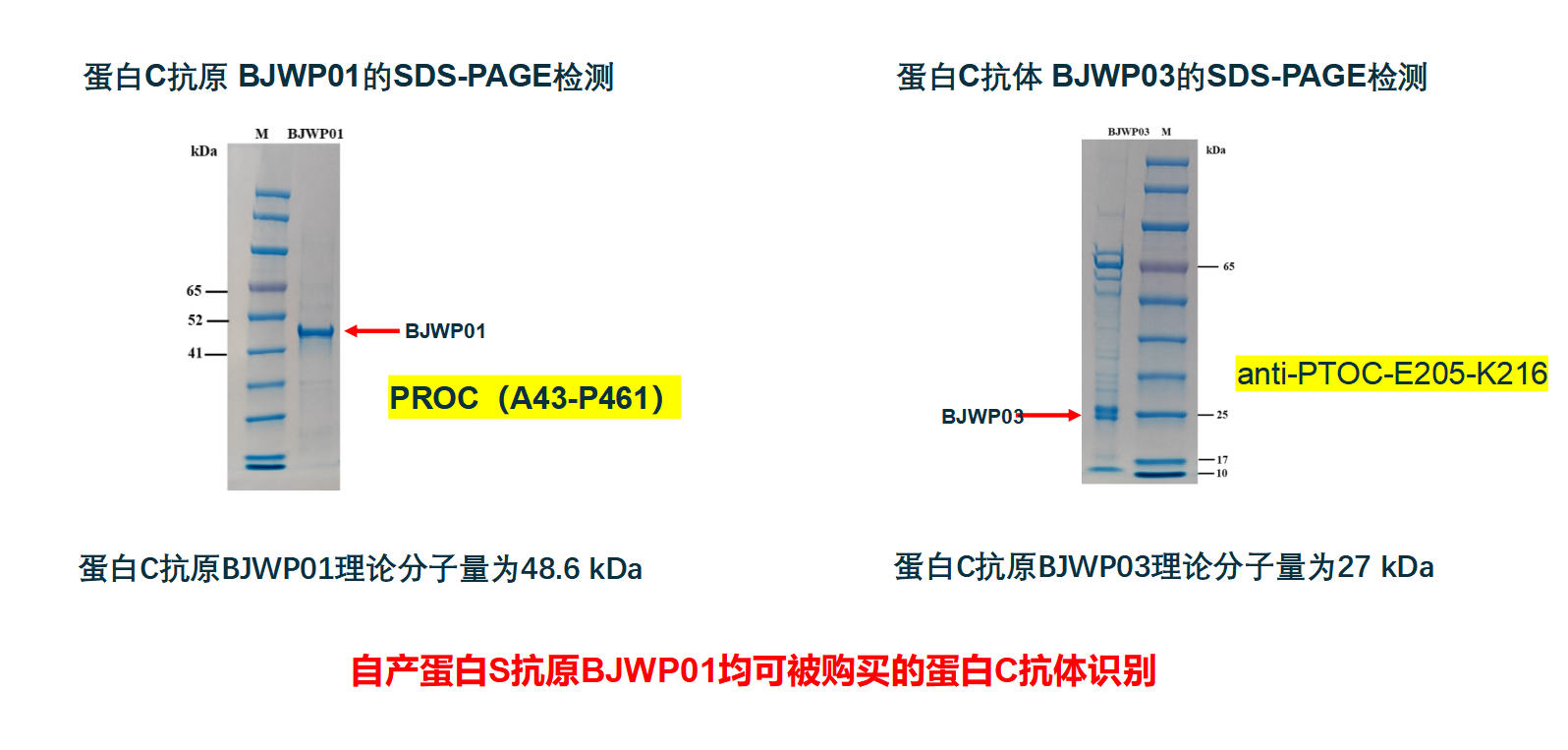一、产品介绍
蛋白 C(proteinC, PC)是一种维生素 K 依赖性的血浆丝氨酸蛋白酶原,活性蛋白C是人体内重要的抗凝蛋白,其抗凝活性占全血的 20%~30%, 体外只要达到 0.12μg/ml 即可引起明显的抗凝效应。PC 在血浆中的存在形式为酶原且其自身不具备生物学作用,若要发挥其抗凝血活性则必须使 PC 被激活为活化蛋白 C。 2021年《易栓症诊断与防治中国指南》在易栓症和VTE患者病因筛查中推荐进行蛋白C活性检测。
目前临床关于蛋白C的检测包括两类:一类是对其抗原即含量的检测,另一类是对其活性的检测。蛋白C免疫检测原料价格很高,不利于产品生产销售寻求蛋白C免疫检测原料自产解决方案,目前已开发完成。
Activated protein C (APC) is an anticoagulant serine protease derived from the two chain, vitamin K-dependent zymogen, protein C (3-7). A complex between alpha-thrombin and thrombomodulin catalyzes a single cleavage at Arg-12 (Arg-14 in bovine) in the heavy chain of protein C, to generate activated Protein C. Several non-physiologically relevant proteases such as RVV-X activator, trypsin, and PROTAC are also capable of activating protein C. APC functions as an anticoagulant which catalyzes the proteolytic inactivation of the cofactors, factors Va and VIIIa, leading to inhibition of the prothrombinase and factor Xase complexes. The inactivation of factors Va and VIIIa is both Ca2+ and phospholipid dependent. The vitamin K dependent cofactor, protein S, moderately increases this rate of inactivation by forming a 1:1 complex with APC (Kd=6×10-9M) (8). Several factors attenuate the anticoagulant activity of APC. Factor Xa protects factor Va from proteolysis by APC by competing for a similar binding site on factor Va. Thrombin has also been proposed as a regulator of APC by proteolytic inactivation of protein S. In addition, APC is regulated by a circulating heparin-dependent protein C inhibitor (PAI-3), a circulating heparin-independent protein C inhibitor, a platelet-derived protein C inhibitor, and PAI-1. The complexes formed between APC and both types of PAI have been reported to account for increased fibrinolysis observed upon infusion of APC or the generation of APC in vivo. In addition to our standard APC preparation, an active site-blocked form containing Dansyl-EGR-chloromethlyketone is also available. Activated protein C is prepared from purified protein C by activation with thrombin followed by ion exchange chromatography (4). APC is supplied in 50% (vol/vol) glycerol/H2O and should be stored at -20oC. Purity is determined by SDS-PAGE analysis and activity is measured using a chromogenic substrate assay. All production lots of APC are also tested for their ability to prolong the aPTT of normal human plasma, as required for the APC resistance assay (10,11). The results of this test are provided for each lot, as an aPTT (+/- APC) ratio (10nM APC).
二、产品特点
